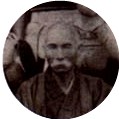
|

|
Shito-ryu is a combination style, which attempts to unite the diverse roots of karate. On one hand, Shito-ryu has the physical strength and long powerful stances of Shuri-te derived styles, such as Shorin-ryu and Shotokan, on the other hand Shito-ryu has circular and eight-directional movements, breathing power, hard and soft characteristics of Naha-te and Tomari-te styles, such as Goju-ryu . Shito-ryu is extremely fast, but still can be artistic and powerful. In addition, Shito-ryu formalizes and emphasizes the five rules of defense, developed by Kenwa Mabuni, and known as Uke no go gensoku, Uke no go genri or Uke no go ho:

|

|

|
- (rakka, “falling petals”). The art of blocking with such force and precision as to completely destroy the opponent’s attacking motion. Examples of rakka are the most well-known blocks, such as gedan-barai or soto-uke.
- (ryusui, “running water”). The art of flowing around the attacker’s motion, and through it, soft blocking. Examples are nagashi-uke and osae-uke .
- (kusshin, “elasticity”). This is the art of bouncing back, storing energy while recoiling from the opponent’s attack, changing or lowering stance only to immediately unwind and counterattack. Classic examples are stance transitions zenkutsu to kokutsu and moto-dachi to nekoashi-dachi .
- (ten’i, “transposition”). Ten’i is the utilization of all eight directions of movement, most importantly stepping away from the line of attack.
(hangeki, “counterattack”). A hangeki defense is an attack which at the same time deflects the opponent’s attack before it can reach the defender. Examples of this are various kinds of tsuki-uke, including yama-tsuki.
Modern Shito-ryu styles also place a strong emphasis on sparring. Shito-ryu stresses speed, and fighting is generally initiated from a higher, more upright stance than Shotokan employs. On the other hand, because the style has so many kata, a great deal of time is spent perfecting any one of its 40 to 60 forms.













